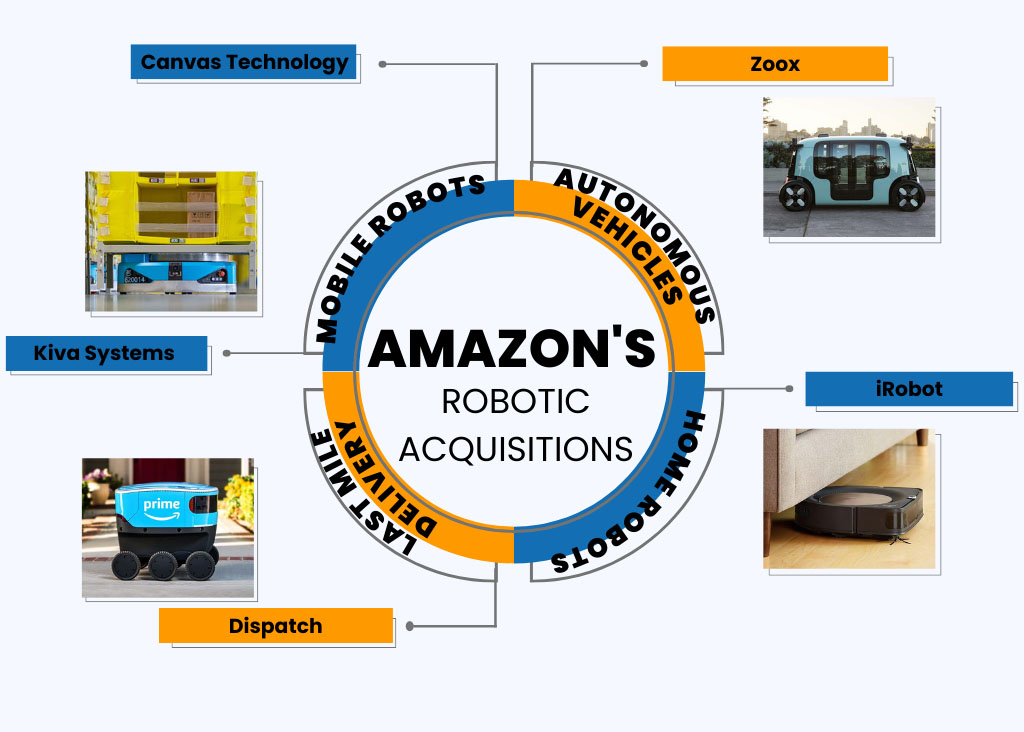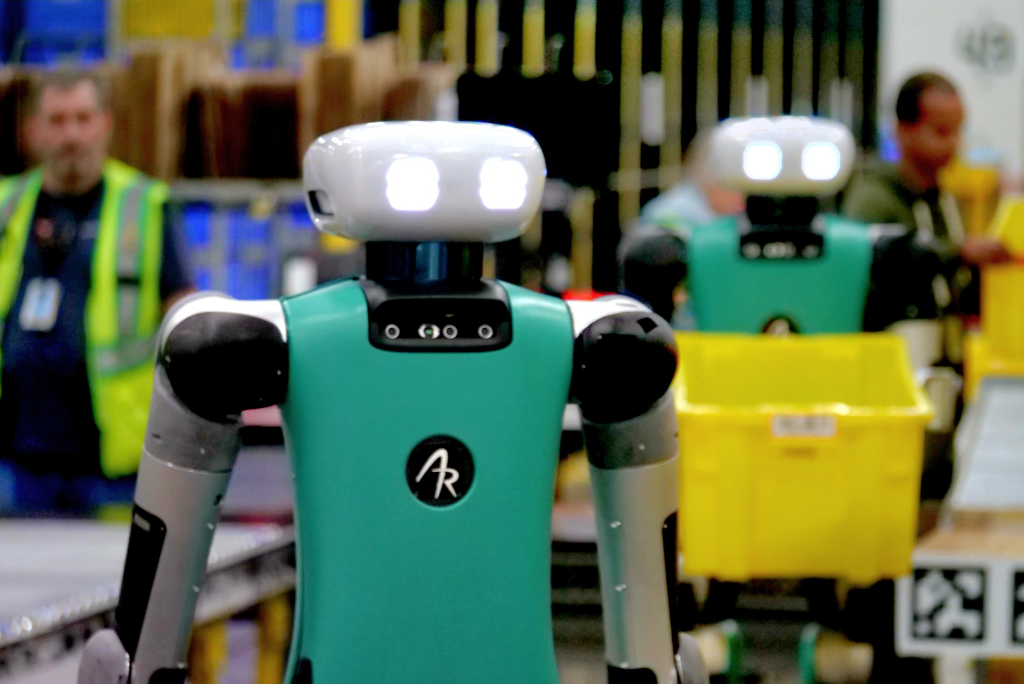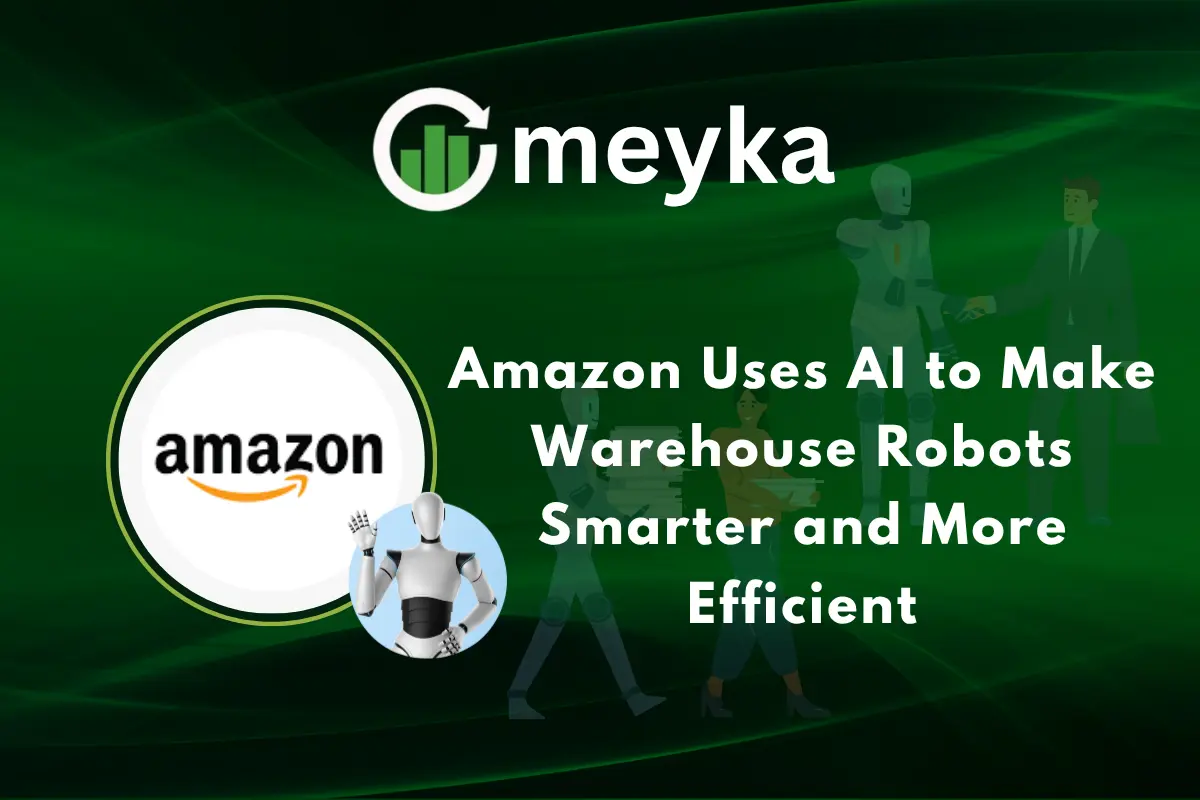Amazon Uses AI to Make Warehouse Robots Smarter and More Efficient
On October 22, 2025, Amazon announced that it had deployed more than one million robots across its global fulfillment network. These machines are no longer just lifting and moving boxes; they’re getting smarter. Thanks to new artificial-intelligence systems, the robots can now recognize products, predict the best paths through busy warehouse aisles, and even anticipate when they’ll need maintenance.
The result? Faster deliveries for customers and less strain for workers. In this article, we’ll dive into how Amazon uses AI to turn its robotic helpers into intelligent teammates.
We’ll explore what cutting-edge tech is involved, how humans and machines are working together, and what this all means for the future of warehouse automation.
Evolution of Amazon’s Warehouse Automation
Amazon began its robotics journey with a big move on March 19, 2012, when it bought Kiva Systems. That buy changed how goods move inside warehouses. Early robots simply carried shelves to human pickers. They cut walking time and sped up orders.

Over the last decade, the fleet grew into many robot types. Some lift heavy loads, others move carts. Some act like mobile conveyors. The change turned static storage into a dynamic system. Human roles shifted from grabbing boxes to supervising machines and fixing them.
How AI Improves Robot Abilities?
Artificial intelligence now gives robots better senses and smarter choices. Computer vision lets robots identify shapes, labels, and product positions. Machine learning models predict the fastest routes through crowded aisles.
Generative AI systems, like DeepFleet, act as a traffic manager. DeepFleet reduces robot travel time by about 10%. Predictive maintenance uses sensor data to spot wear before a breakdown. That reduces downtime and saves money. These AI layers help robots adapt to real conditions.
Amazon’s New Robots and Real Capabilities
Amazon has rolled out several advanced robots in 2024-2025. Proteus is a fully autonomous mobile robot that navigates around people and obstacles. Vulcan is an AI-driven arm that can “feel” objects. Vulcan uses force sensors and vision to pick fragile items without damage.

Amazon says Vulcan handled roughly half a million orders in testing and works in sites like Spokane and Hamburg. Other systems coordinate multiple arms and mobile units to speed sorting and packing. These machines can take on tasks that once required bending, lifting, or climbing.
Human-Robot Collaboration
Robots handle heavy, repetitive, and risky tasks. Humans still make complex decisions and quality checks. The goal is a hybrid floor where machines assist and humans supervise. Robots reduce physical strain.
Humans move into technician, operator, and troubleshooting roles. Training programs aim to reskill staff for these jobs. Amazon reports widespread upskilling efforts to prepare workers for tech-heavy roles. That approach frames automation as augmentation, not only replacement.
Efficiency and Cost Benefits for Amazon
AI-driven robots speed order processing. Shorter travel and smarter routing cut cycle time. Predictive maintenance lowers repair costs and unplanned stoppages. Storing items closer to demand becomes easier with smarter fleet control. These gains translate into faster deliveries and lower operational expenses.
Analysts note that even small percentage improvements at Amazon scale up to large cost savings. Using AI tools can quantify such productivity gains for investors and analysts.
Amazon AI Robots: Challenges and Criticisms
Automation brings real concerns. High installation and upkeep costs can be a barrier for smaller operators. Labor groups express worry about job loss and reduced hours. Safety matters when robots and people share space.
Critics also challenge marketing claims about “AI” and call for scrutiny of how intelligent these systems truly are. Amazon counters with training programs and safety protocols. Still, monitoring the social and economic effects of large-scale automation remains essential.
Case Studies and Measurable Impact
Early deployments show clear metrics. Facilities using advanced robot fleets report faster picking and fewer errors. Vulcan’s tests processed significant order volumes and handled a large share of SKU types previously done by humans.
Proteus and other autonomous movers reduced manual transport time. In some centers, engineering and maintenance headcount rose, while repetitive tasks declined. These shifts give operations more predictability and smoother peak-season handling.
Future Outlook: The Smart AI Warehouse Ecosystem
The next phase connects AI, robotics, and cloud services. Agentic AI groups inside Amazon are building systems that can act with more autonomy. Expect tighter links between demand forecasting, inventory placement, and robot routing. More robots will gain tactile sensing, better vision, and multi-arm coordination.
Sustainability gains may follow as robots use less travel and energy. The human role will continue to evolve toward oversight, problem-solving, and systems engineering. The warehouse of 2030 will be more connected, adaptive, and data-driven.
Bottom Line
AI has moved warehouse robots from simple movers to smart partners. The trend cuts costs and speeds delivery. It also raises tough questions about jobs and safety. Accurate oversight and strong training programs will shape whether automation helps workers and customers alike. Continued transparency and measured rollout can make the transition fairer. For logistics, the combination of AI and robotics is now a defining force.
Frequently Asked Questions (FAQs)
Since 2025, Amazon has used AI to guide robots in picking, sorting, and moving goods faster. It helps reduce errors and improve delivery speed across warehouses.
In 2025, Amazon introduced robots like Proteus and Vulcan. They use AI to move safely, recognize items, and handle packages with better accuracy and care.
No, Amazon’s AI robots don’t fully replace workers. They handle heavy and repetitive tasks, while humans manage supervision, quality checks, and technical maintenance roles.
Disclaimer: The content shared by Meyka AI PTY LTD is solely for research and informational purposes. Meyka is not a financial advisory service, and the information provided should not be considered investment or trading advice.






